What Is ****** SEO?
****** SEO is the process of improving ******** website rankings in search engine results pages (SERPs). Compared to traditional SEO, however, it poses unique challenges due to the strict regulations governing ********, esports, and online lotteries.
The ******** industry is also very competitive, with thousands of ******* fighting for the same slice of the pie.
They offer similar products and services, target similar audiences, and use similar tactics to gain exposure on the internet.
Regardless of the challenges, you can still rank well and get results, even if you don’t have a billion-dollar business.
Below, we’ll share the best SEO strategies for online ******* and how to overcome the hurdles around it.
How Does ****** SEO Differ from Traditional SEO?
Whether you run a ******** site, an online store, or a fashion blog, it’s essential to follow SEO best practices.
These include keyword research, link building, on-page optimization, creating compelling content, and more.
Applying these SEO tactics may enhance the visibility and ranking potential of your ****** website in search engine results.
At its core, ****** SEO follows the same rules as traditional search engine optimization. The difference lies in the small details.
For instance, the keywords related to this industry are volatile due to a number of factors, such as the high competition and ever-changing regulations.
Potential customers use search terms to explore specific games or online *******. They may also look for information related to ********.
Some examples are “free ***** games,” “play ***** online,” “how to play blackjack,” “iGaming,” and related phrases. (iGaming is the practice of ******* or ******** over the internet.)
However, these keywords may vary in performance based on regulatory changes, seasonal factors, industry trends, and economic events.
If a particular game is banned in a country or state, the keywords related to that game may suddenly get fewer searches from users living in that region.
The tight competition between ******* plays a role, too.
Many ******** companies have deep pockets. Therefore, they can afford to compete for top-performing keywords and experiment with various SEO tactics.
This aspect leads to constant changes in keyword rankings, so you’ll have to constantly refine and update your SEO strategy.
6 Tips to Improve ****** SEO
Here’s how to get started with ****** SEO and outrank your competition.
1. Conduct Keyword Research
The key to successful keyword research is identifying relevant keywords used by potential customers and including them strategically throughout your site.
To get started, brainstorm words and phrases related to ******** websites, such as:
- Online ******
- ******* sites
- ****** site
- Free ***** games
- Play online roulette
You can use Google Autocomplete to find “seed” keywords. These are broad, fundamental terms related to your business.
Type “online *****,” “online ****** games,” or similar terms into the search bar, and you’ll get a list of related keywords.
Once you’ve chosen a keyword, open Semrush’s Keyword Magic Tool to conduct further research.
You’ll find it under “Keyword Research” in the left-side column. Type your keyword into the search bar, then click “Search.”
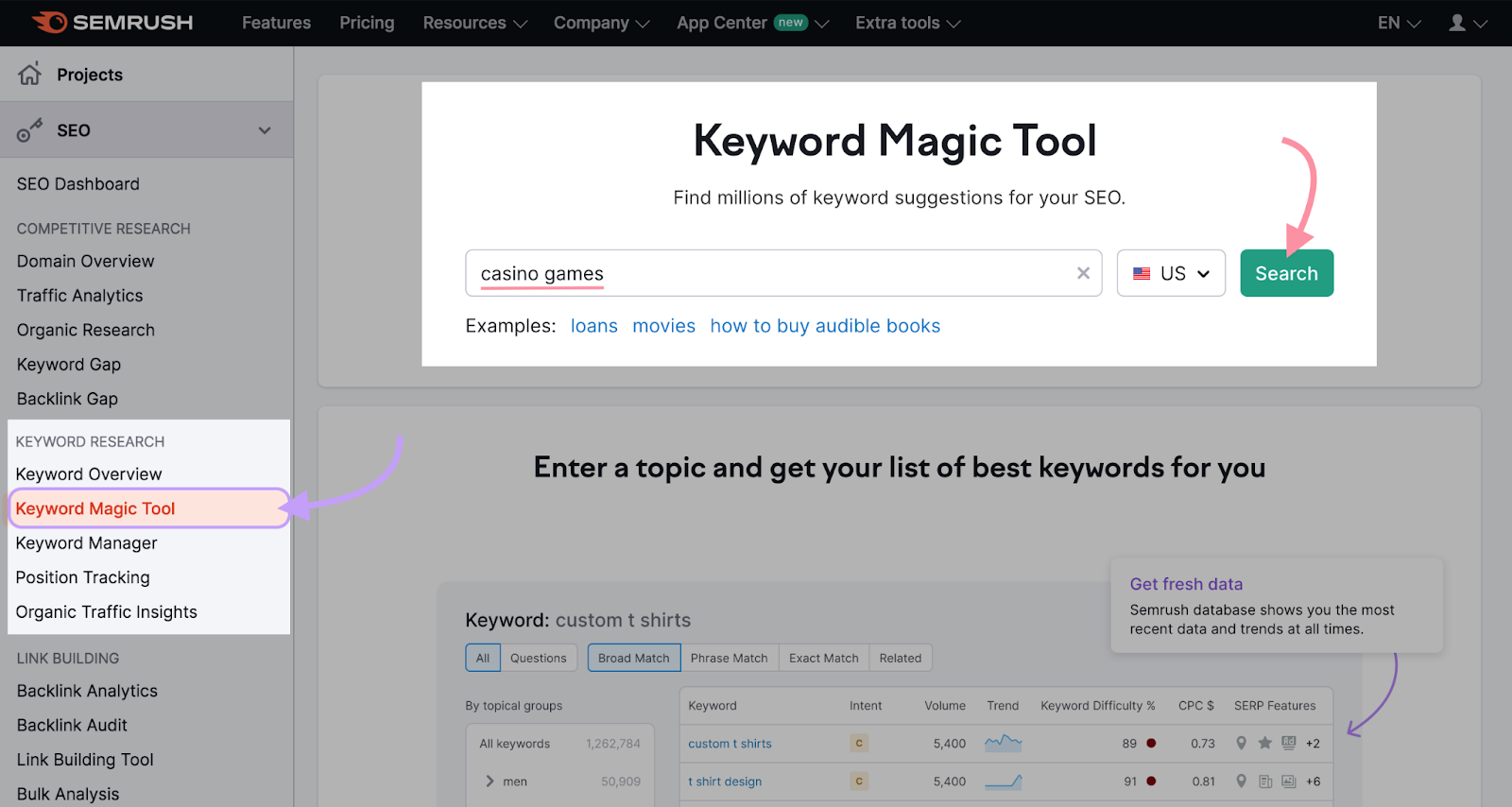
Semrush will generate a list of search terms related to your seed keyword. It will also display relevant data for each term, such as its search volume and keyword difficulty (KD%).
Search volume indicates the average number of times users search for a given keyword each month. Keyword difficulty indicates how difficult it may be to rank higher on Google for that search term.
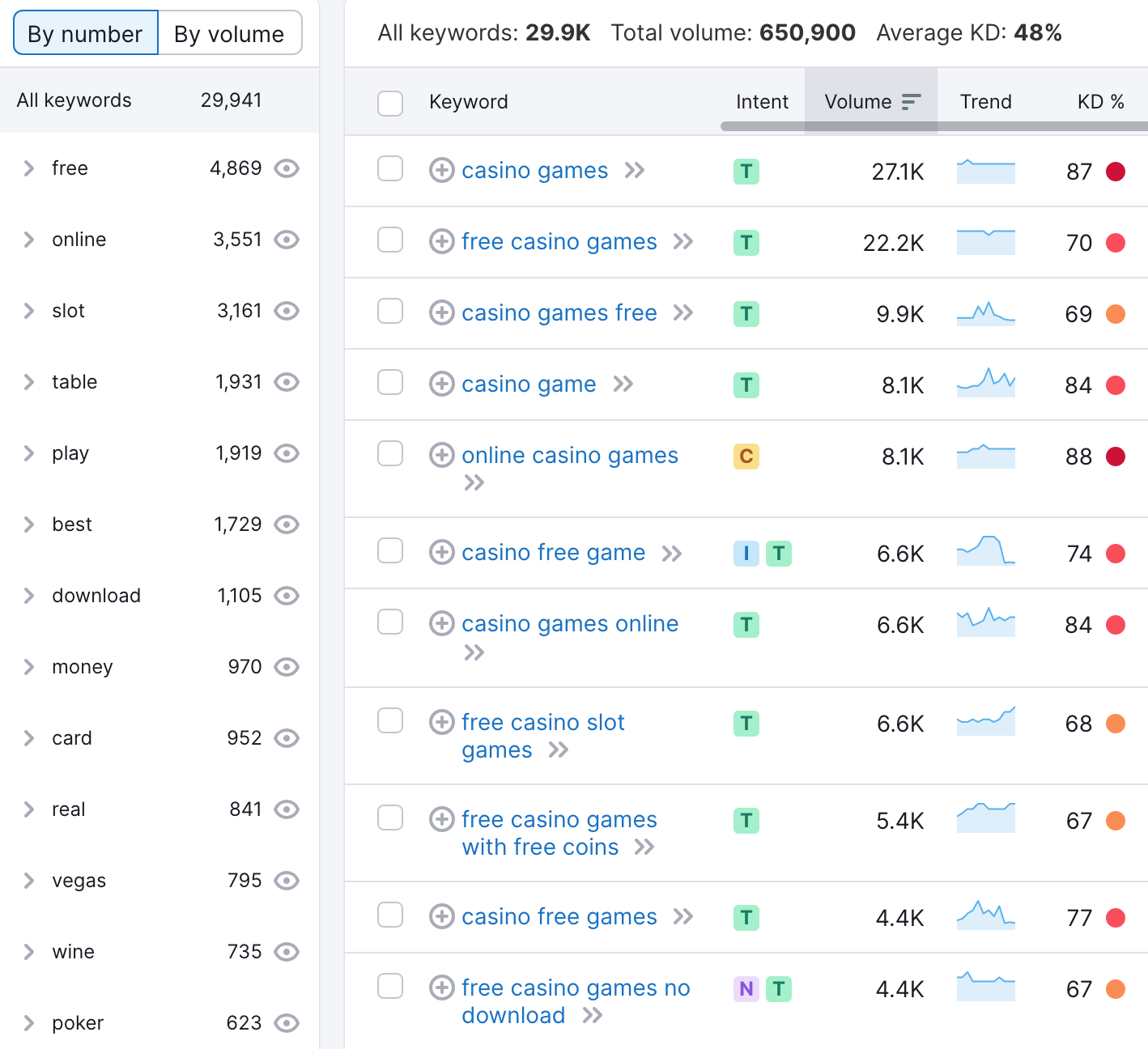
For best results, choose keywords with high search volume and low-to-medium KD%. Ensure they relate to the games and services you offer on your ****** site.
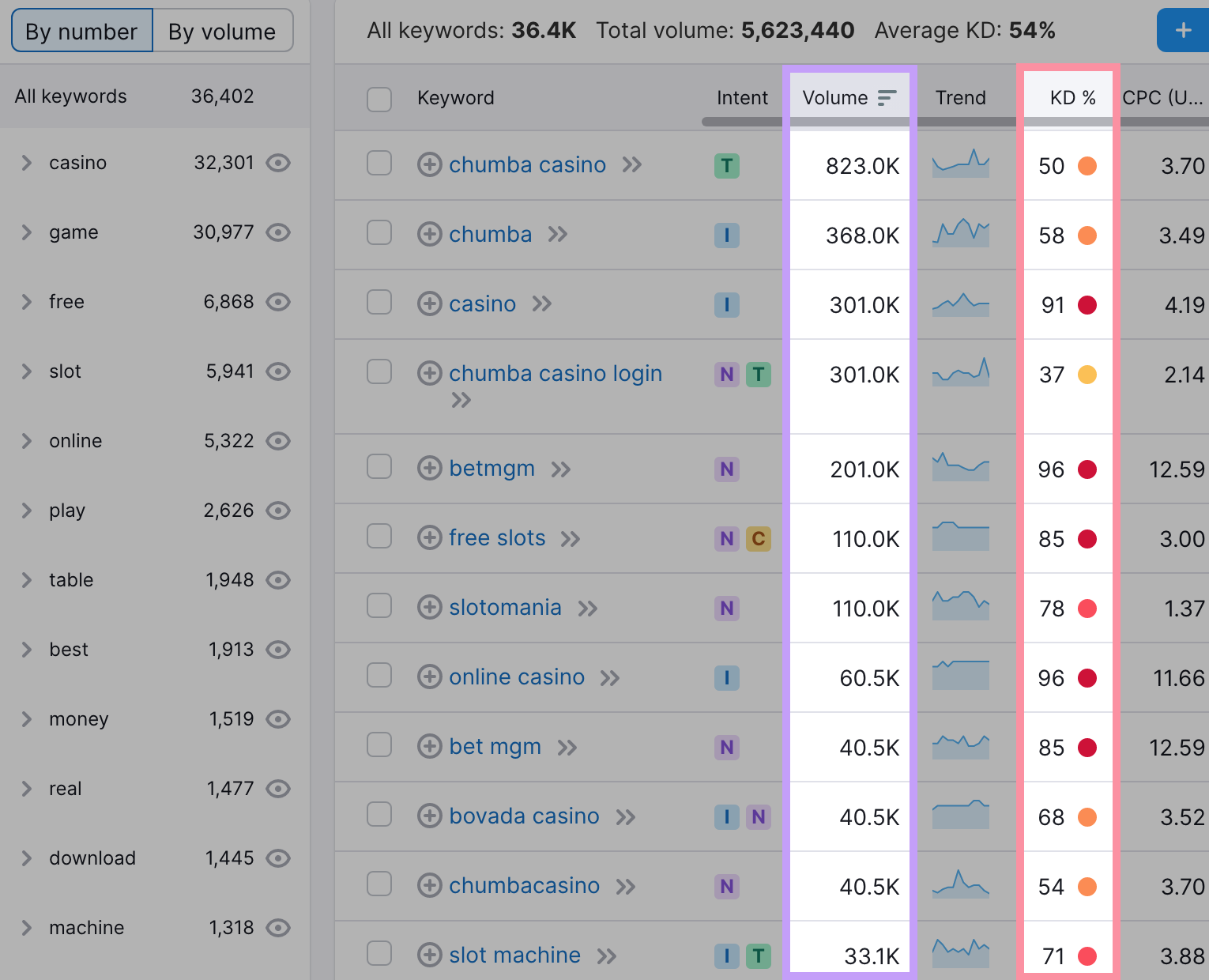
You can also exclude one or more keywords from your search or apply filters to narrow your options.
For example, if your ****** website doesn’t offer a specific game, you can remove any keywords related to it from your search.
Simply click “Exclude keywords,” and then enter the search terms that are not relevant to your site. When you’re done, click “Apply.”
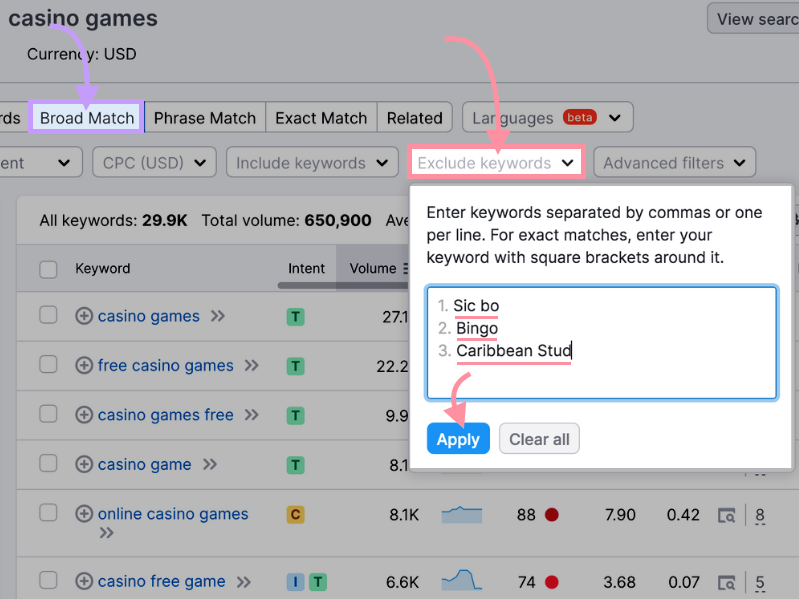
Conduct Competitive Analysis
To outrank your competitors, you need to know what keywords they are targeting. One way to conduct a competitive analysis is to useSemrush’s Organic Research tool.
From your Semrush account, click “Organic Research” under “Competitive Research” in the left-side column. Then, enter your competitor’s URL into the designated field, select the country for which you want to see the results, and click “Search.”
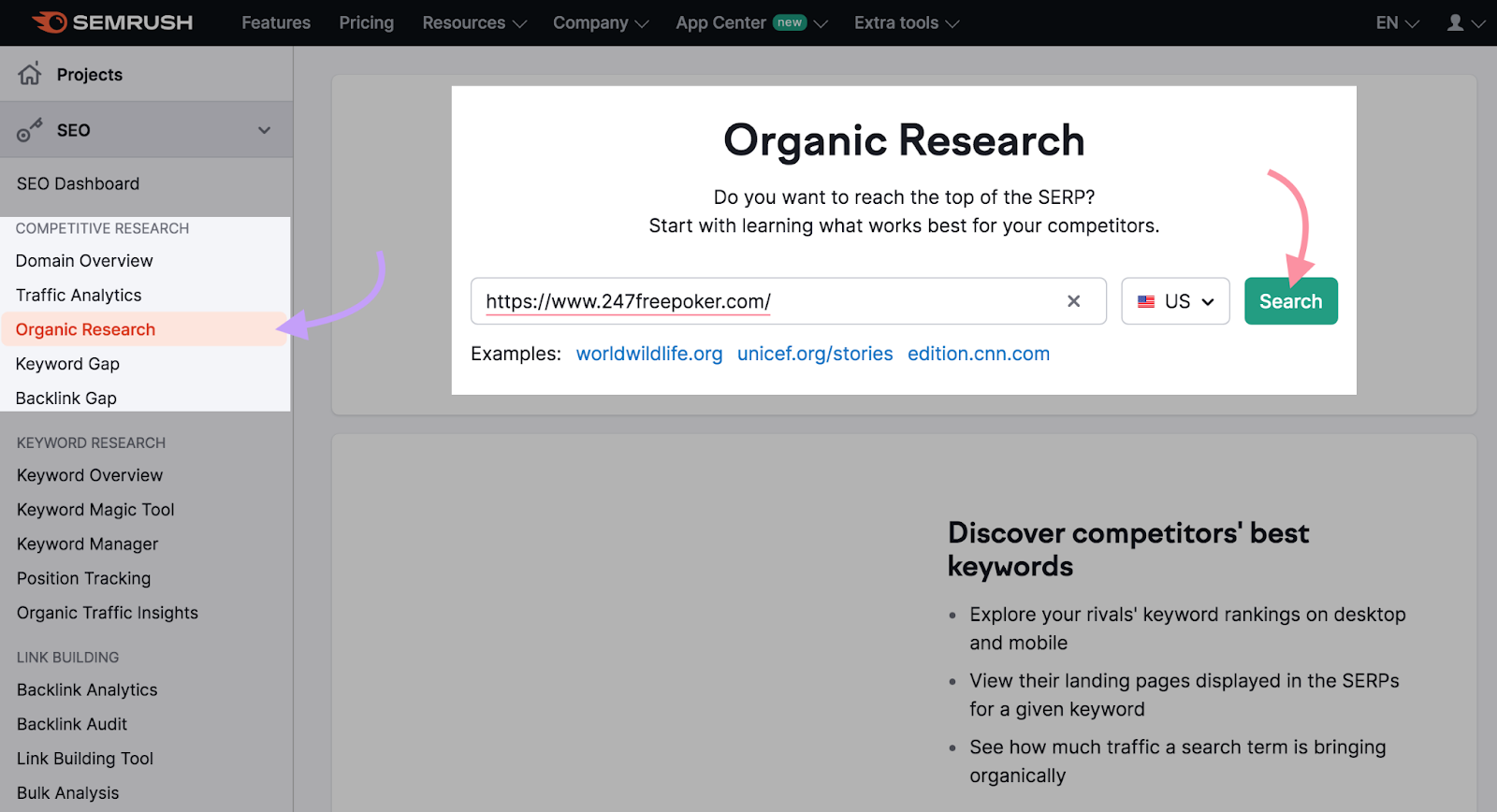
Semrush will list your competitors’ keywords, website traffic, top-ranking pages, and other data.
For example, 247 Free ***** appears on the first page of Google for the keywords “*****,” “free ***** games,” “online *****,” and others.

Click “View all 3.8k keywords” to see all the search terms your competitor uses.

Semrush’s Organic Research tool will display each keyword’s search intent, search volume, KD%, and traffic stats.
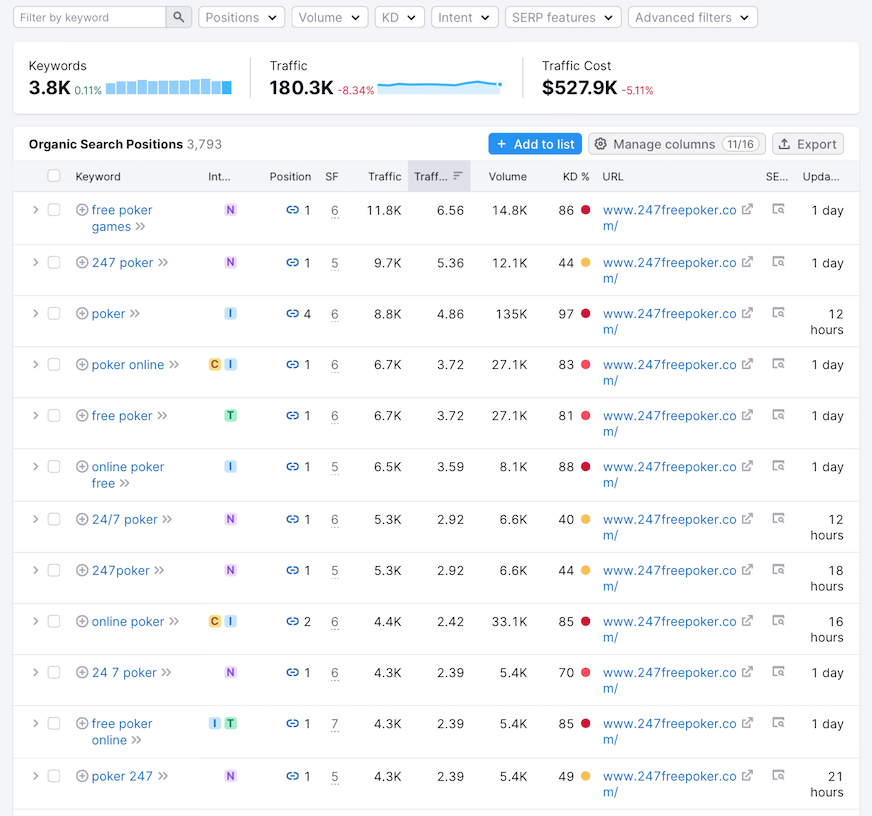
Next, select those keywords that meet your requirements for search volume, ranking difficulty, and other factors. And use them to create high-quality, compelling content for your visitors.
2. Optimize Your Site for Target Keywords
Now that you have a list of keywords, it’s time to use them throughout your site. This practice may help you get higher rankings, which can lead to more organic traffic.
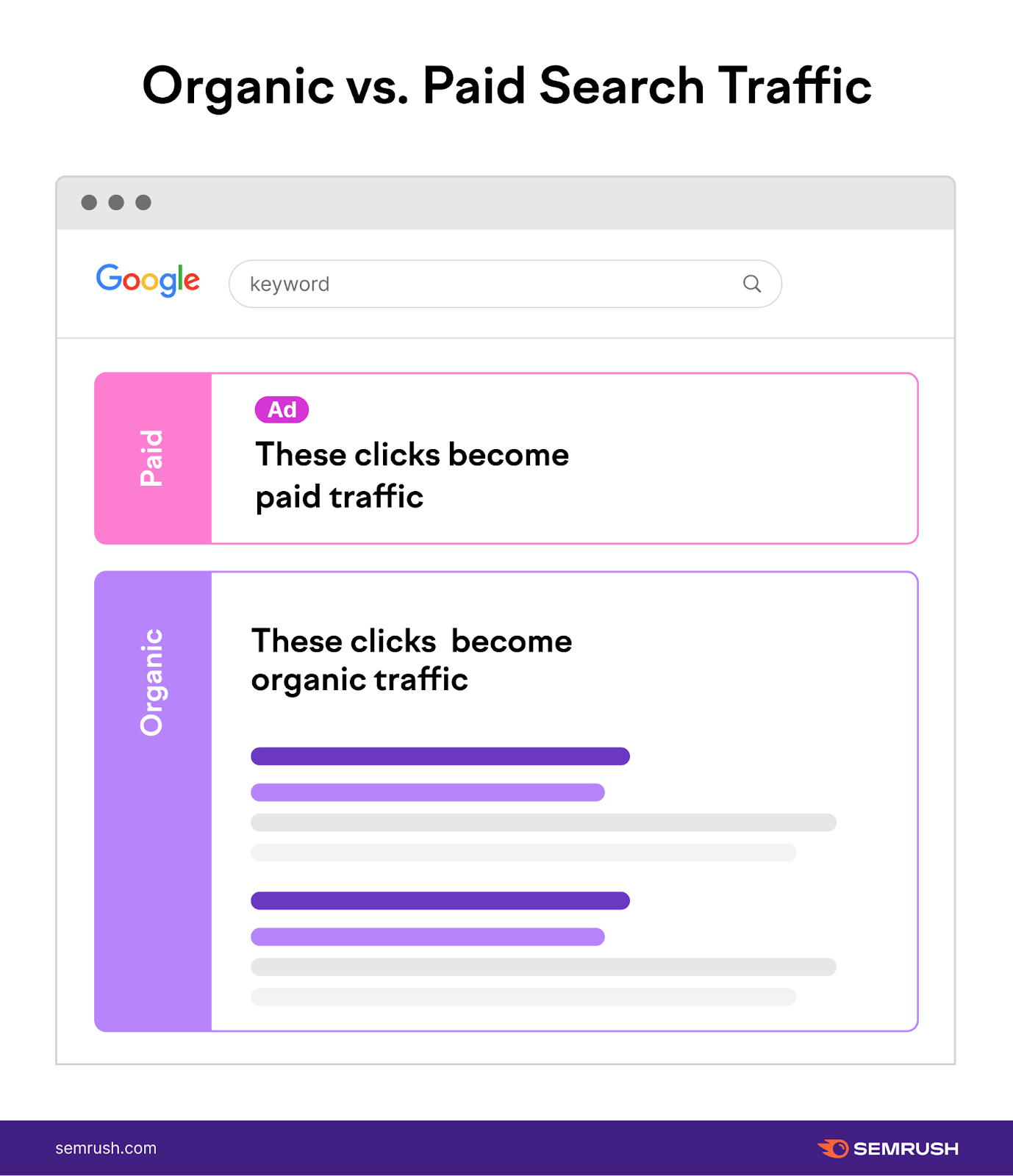
Organic traffic refers to the people who land on your site from unpaid search results. Your content will appear in SERPs based on its relevance to search queries, resulting in “free” traffic.
Choose one primary keyword per web page to focus your content around. This primary keyword should be the most relevant and important term for that page.
You will also want to use secondary keywords that complement the primary keyword and cover related topics and queries.
The primary keyword forms the core of your content, while secondary keywords help in broadening your content’s relevance and reach, giving you more opportunities to appear in various searches related to your topic.
For example, a page dedicated to ***** games could use “online *****” as the primary keyword and “Texas hold’em *****,” “five-card draw,” and “play ***** online” as secondary keywords.
Your primary keyword should appear in the page title, URL, body text, and other strategic locations, including:
Most importantly, use your keywords naturally throughout the content.
Avoid stuffing them into your copy to get traffic. This can hurt your search engine rankings and deter potential customers.
3. Streamline Your Site Structure
A well-structured website can improve the user experience (UX) and boost your SEO efforts.
In a 2021 survey, 42% of respondents said they would leave a website with poor functionality. Consumers also evaluate a website’s layout, navigation, and design before deciding whether to stay or leave.
Here are some SEO techniques to optimize your site structure:
Optimize Your Navigation
To ensure a logical website flow and keep visitors on your site, group your pages into categories and subcategories. You can also link to the user login page and registration page from your main navigation.
Ideally, customers should be able to find what they are looking for on your website without having to click the mouse more than three times.
For example, your homepage should direct users to the main pages, such as “slots,” “******,” “*****,” and “bingo.” Like GameTwist’s:

Group Related Content
Organize your blog posts, ****** games, and services by category and link to the main categories from the navigation menu. This can improve website navigation and help search engines crawl and index your content more easily.
On a similar note, you can link related pages together.
For example, if a blog post about ****** games mentions Texas Hold’em, include a link to another blog post revolving around this particular ***** game.
This practice is called internal linking.
Use Headings Hierarchically
Header tags, or headings, allow visitors to quickly scan your pages and find the information they’re looking for.
These HTML elements also help search engine bots understand what a page is about. They are numbered from 1 to 6, starting with the H1 tag and followed by H2, H3, etc.
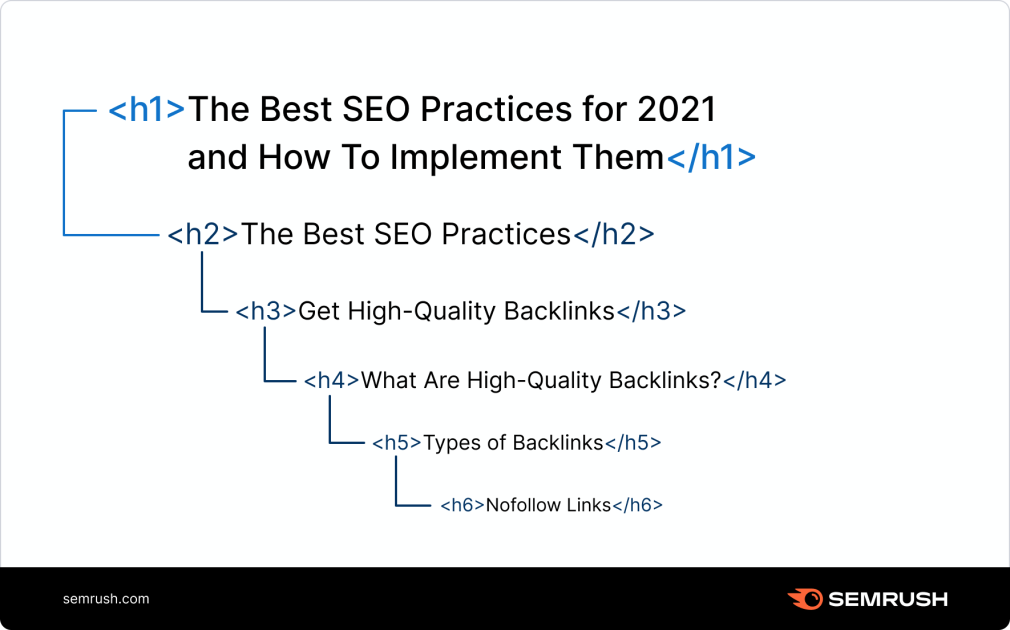
Optimize Your Headings
Each page should have one H1 tag that includes your target keyword.
If your primary keyword for a page is “online ***** games,” your H1 tag could be “Online ***** games for beginners.” Ideally, use your target keyword and/or secondary keywords in other headings, too.
Create SEO-Friendly URLs
Customers should be able to figure out the main subject of your web page just from seeing the URL.
Keep URLs short and relevant by removing unnecessary elements, such as page numbers (e.g., https://yourwebsite.com/blog?page=2) or parameters related to user preferences (e.g., https://yourwebsite.com/settings?theme=dark).
Use hyphens instead of underscores to separate the words in URLs, and include your target keyword whenever possible. Like this example from CardPlayer:

Set up a Sitemap
Search engines use sitemaps to understand a website’s structure and determine the most important pages. This file lists all the pages on a site, including the **** when they were last modified.
You can create one manually or use a sitemap generator like XML Sitemaps or WriteMaps. Some content management systems (CMSs), including WordPress, will automatically generate a basic sitemap.
4. Build High-Quality Links
We’ve already mentioned internal linking, but you also need quality links from other websites.
In the example below, Inc. mentioned and linked to a Semrush study. That’s called a backlink, or inbound link.
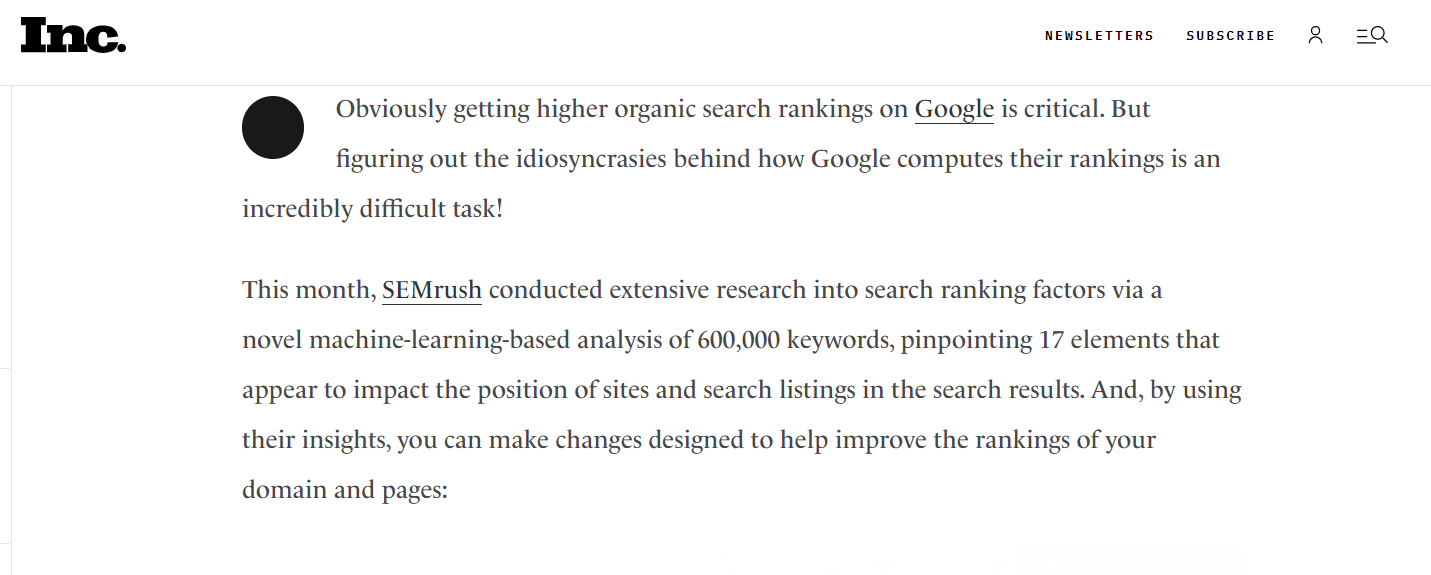
Google’s algorithm considers the number and quality of backlinks when it ranks websites. The stronger your backlink profile, the higher you will rank in Google.
High-quality links are relevant links from trusted sources, such as reputable websites and blogs.
These websites don’t necessarily need to be in your niche. Just make sure the page linking to your site is relevant to your niche or industry.
For example, Inc. isn’t in the marketing or SEO business, but the article linking to Semrush is relevant to the topic (SEO).
However, it’s important to note that some webmasters may be hesitant to link to content related to ********.
One solution is to team up with affiliate marketers, iGaming associations, or ****** review sites.
Here are some other examples of potential strategic partnerships in the industry:
- Influencers and bloggers
- News outlets
- Regulatory authorities
- Nonprofit organizations
- Payment processors
- ******** forums
- Associations in the iGaming industry
For example, some online ******* donate a portion of their profits to charity. They may get featured on the organization’s website, which can help them acquire high-quality backlinks.
You can also partner with payment processors that work with ******** companies. They may list your ****** business as a partner on their websites and link to your homepage.
Another option is to use Semrush’s Link Building tool to find relevant link prospects.
First, launch the tool and enter your domain name in the designated field. Then, click “Start Link Building.”
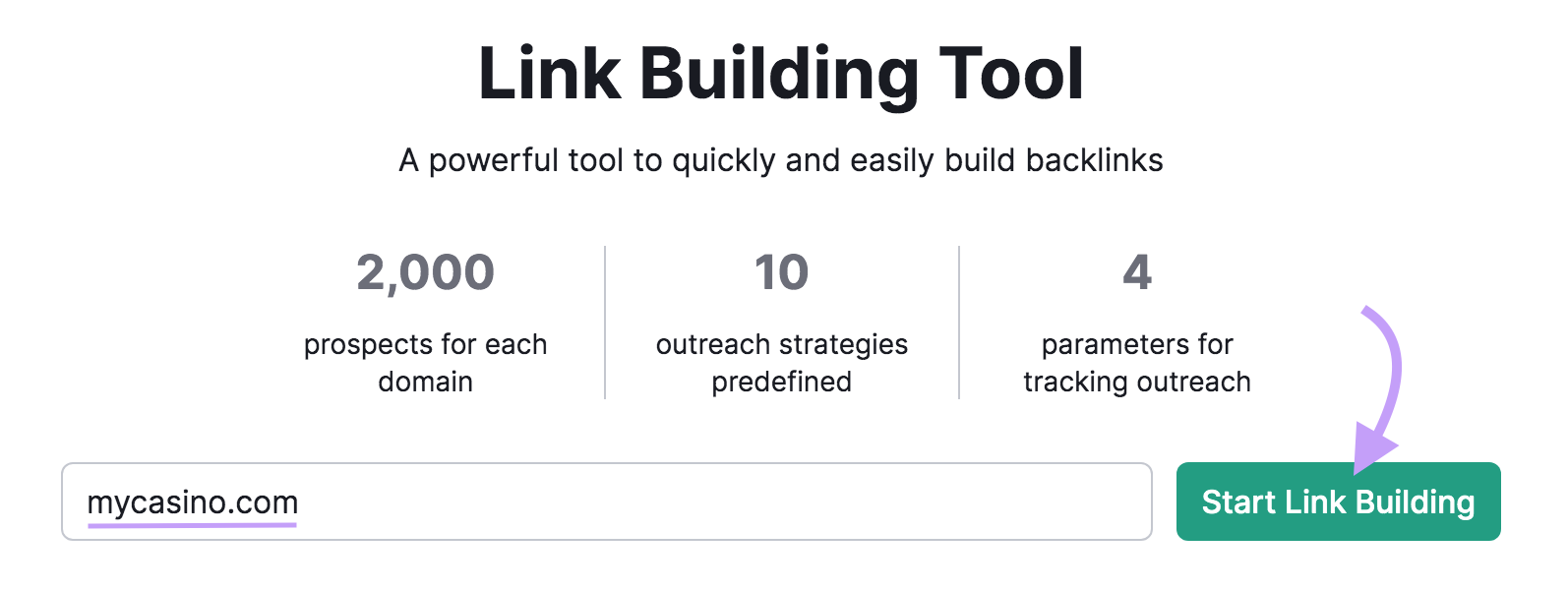
Wait for the pop-up window, and then enter your target keywords.
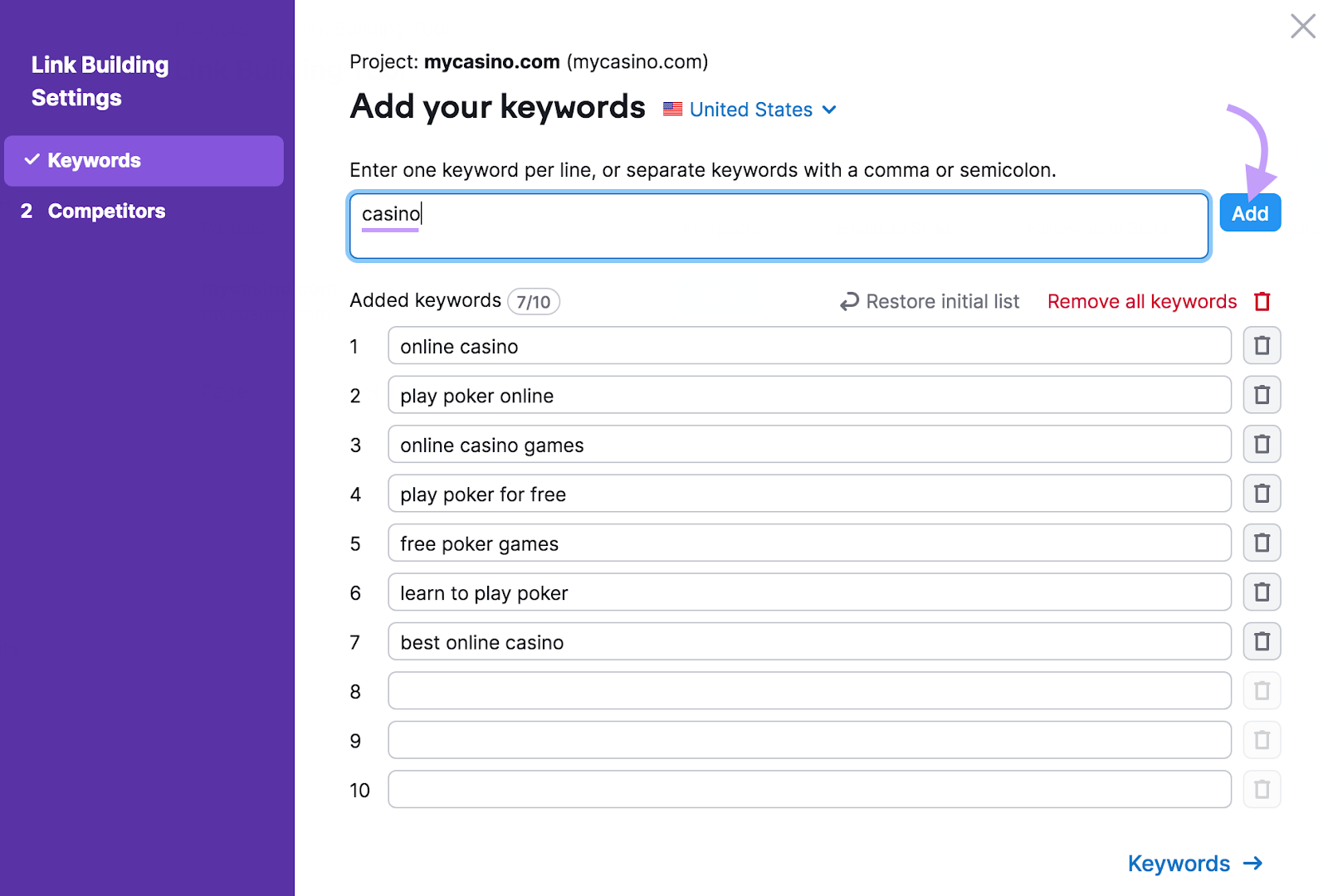
Next, enter the domain name of at least one competitor.
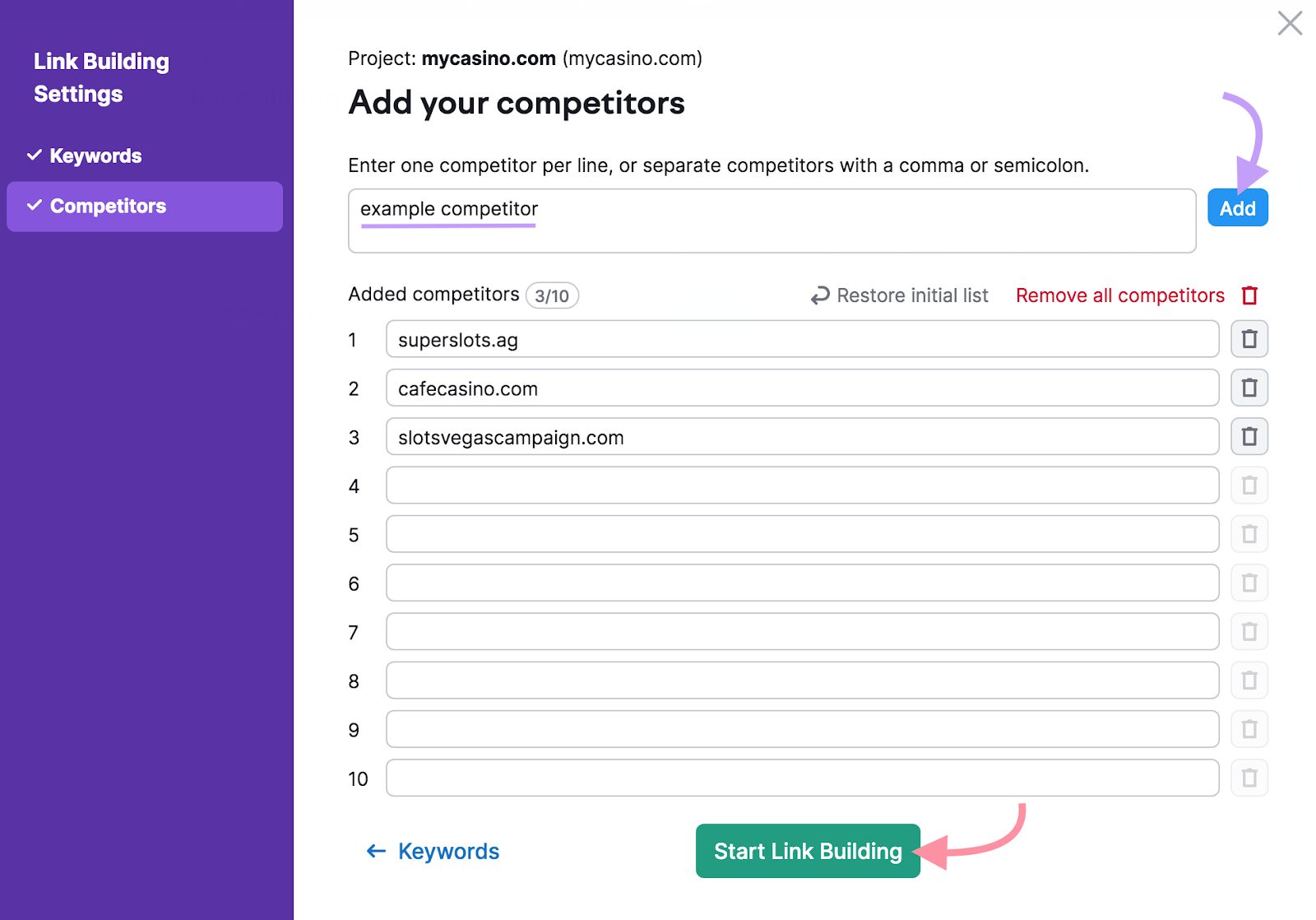
Click “Start Link Building” and let Semrush work its magic.
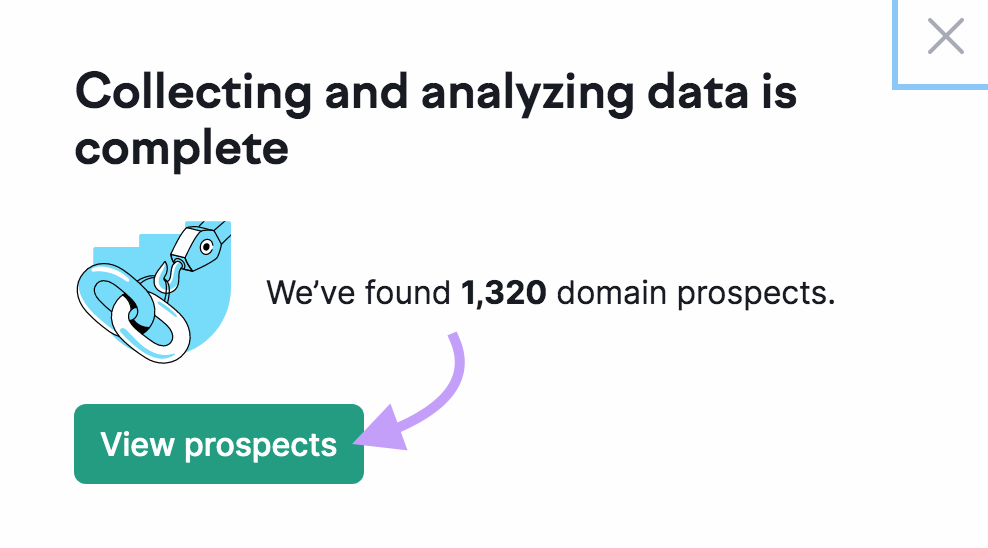
Now, click “View Prospects” to discover link-building opportunities.
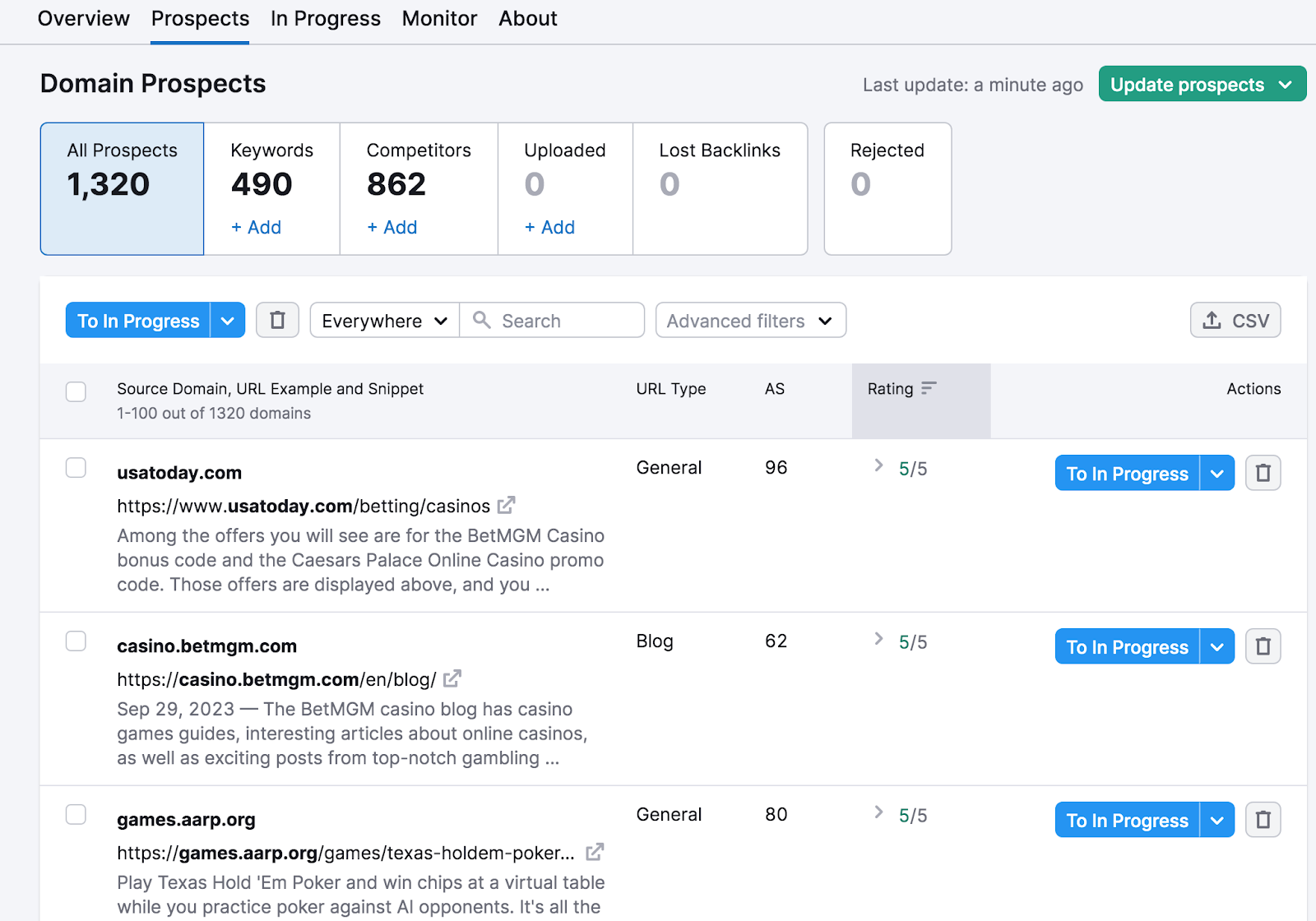
Semrush will display each prospect’s URL type, rating, and authority score (AS).
Once you’ve identified the best targets, click the “To In Progress” button next to their domain names.
Alternatively, select an outreach strategy from the drop-down menu under that button, and Semrush will add the prospect to your “In Progress” list.
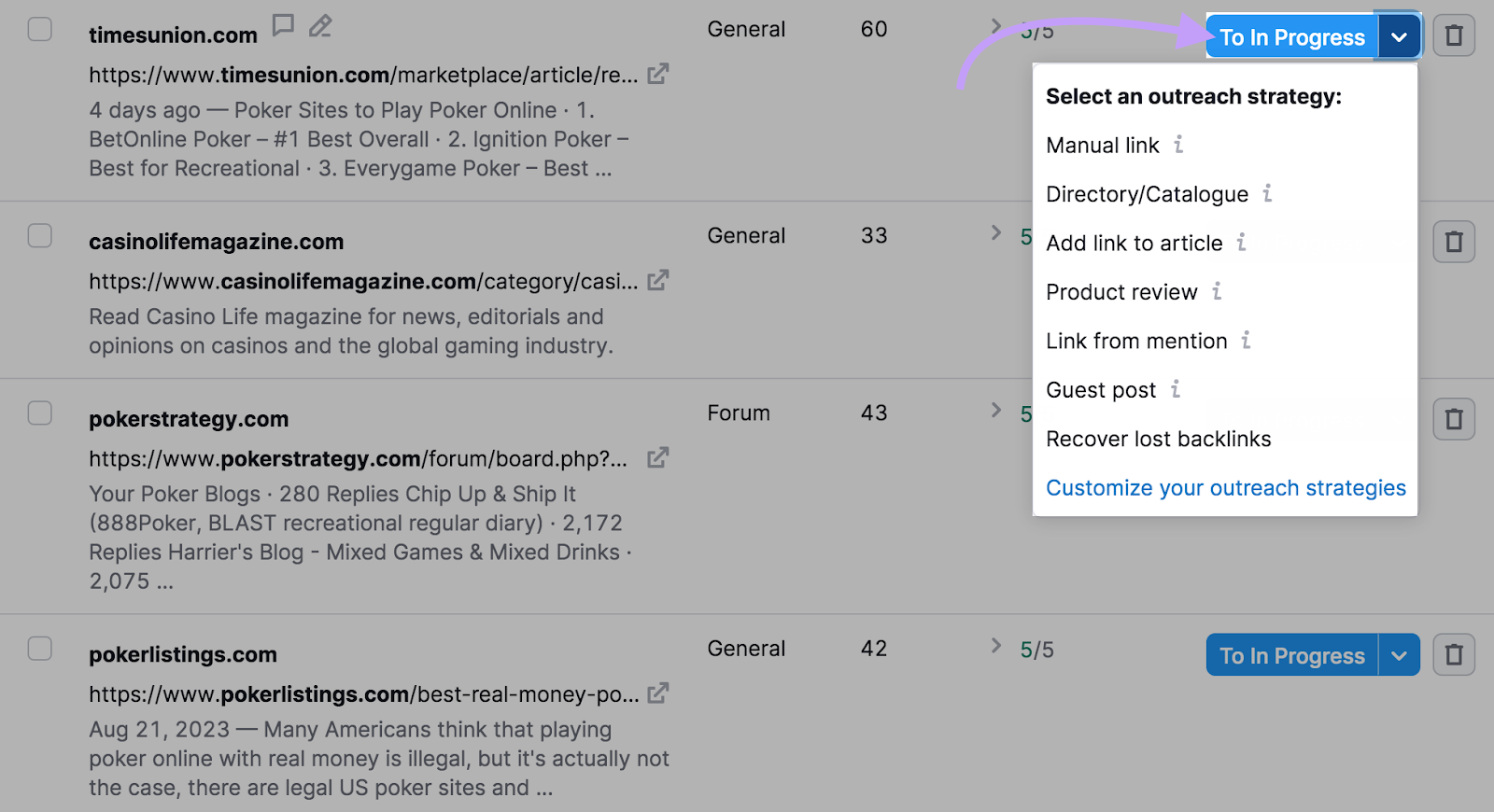
Next, click “In Progress” from the top bar menu to access your list of prospects.
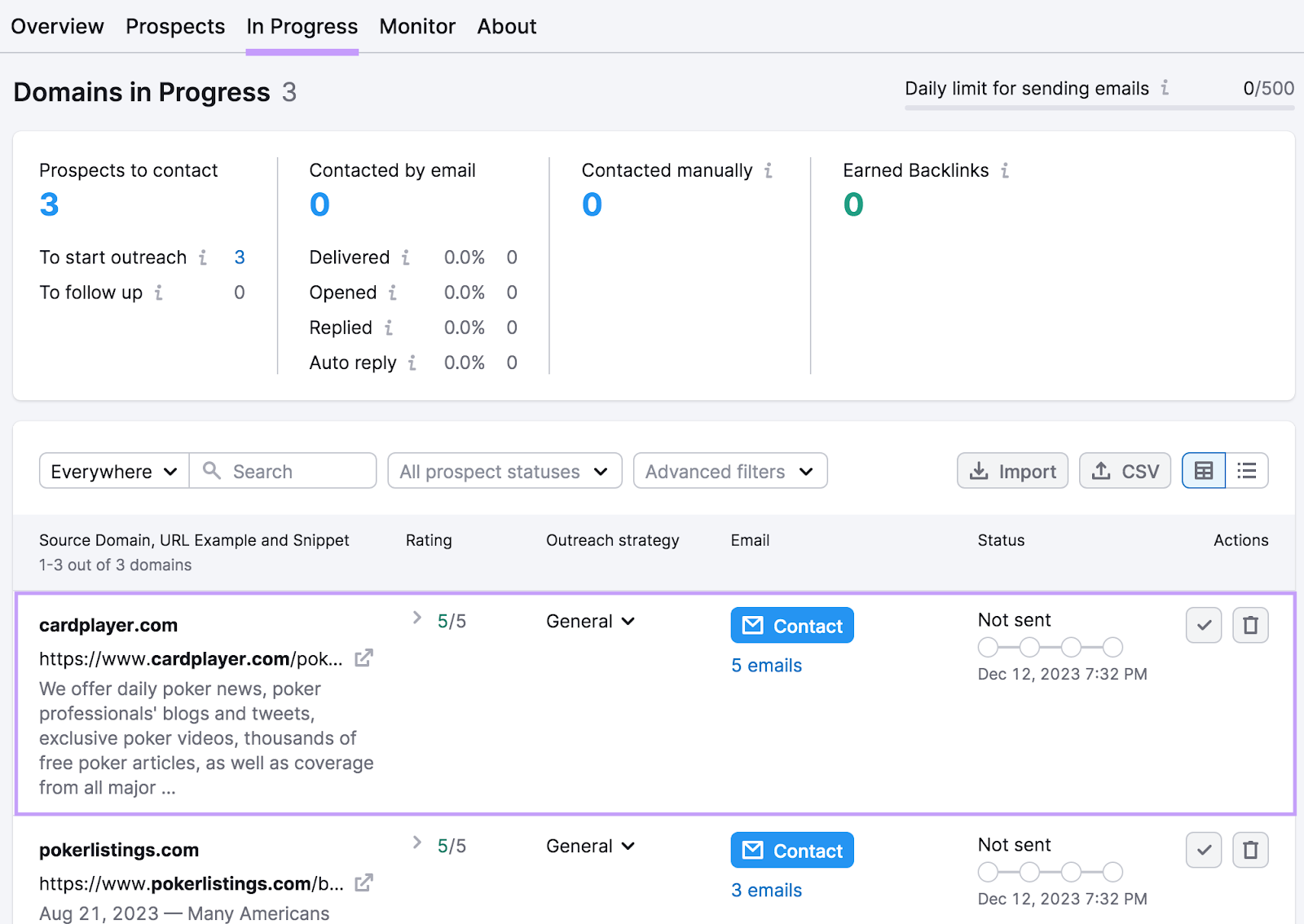
From here, you can contact each prospect via email or other channels, such as their websites and social media pages. Semrush will list their contact data, so the next step is to craft a message to kindly request a link to your website.
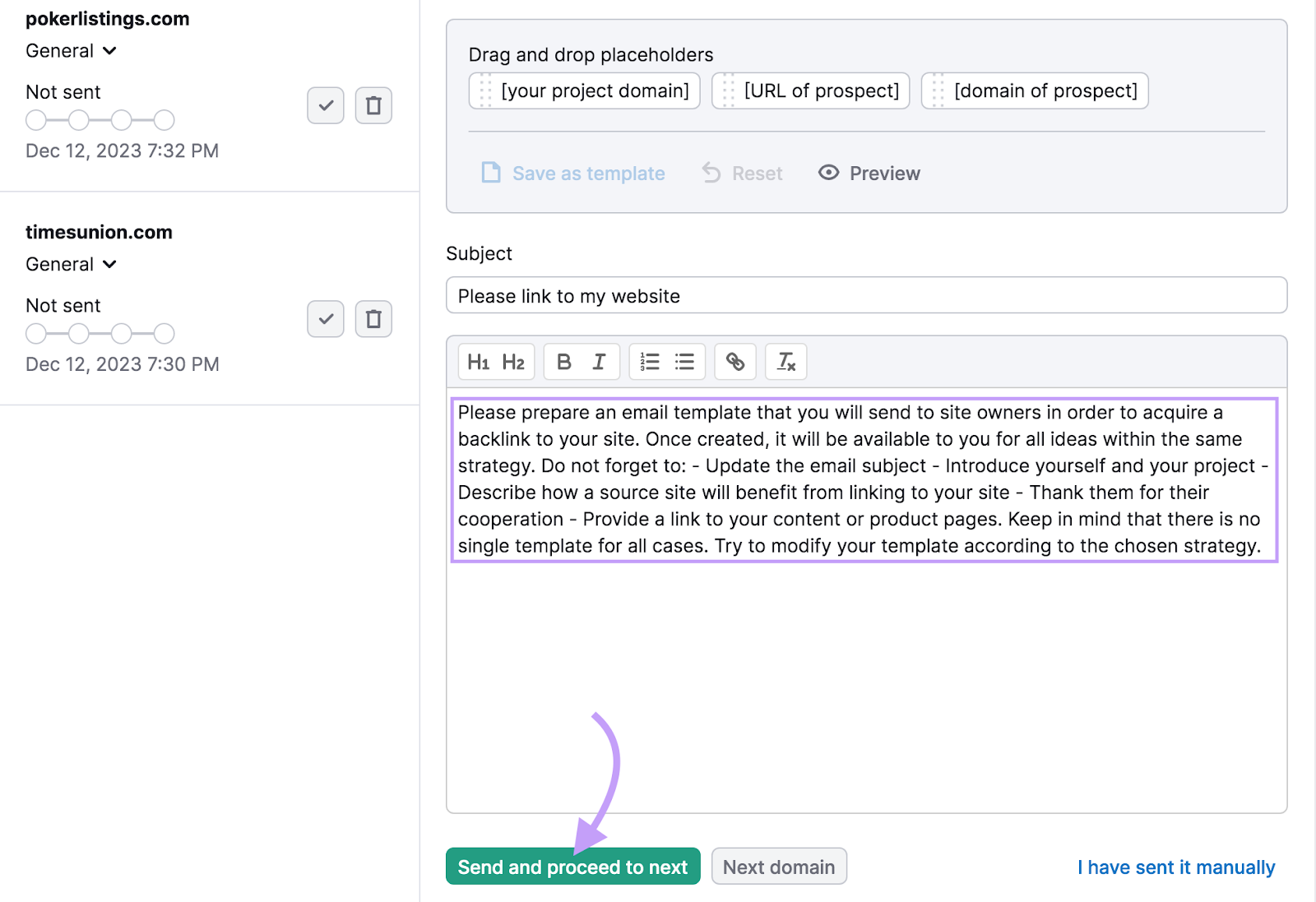
Simply click “Contact” and enter your message in the designated box. Then, click “Send and proceed to next.”
Note that if you have only one prospect on your list or one remaining, the button will read “Send.”
When a prospect accepts your request and gives you a backlink, monitor the link status directly from your Semrush account.
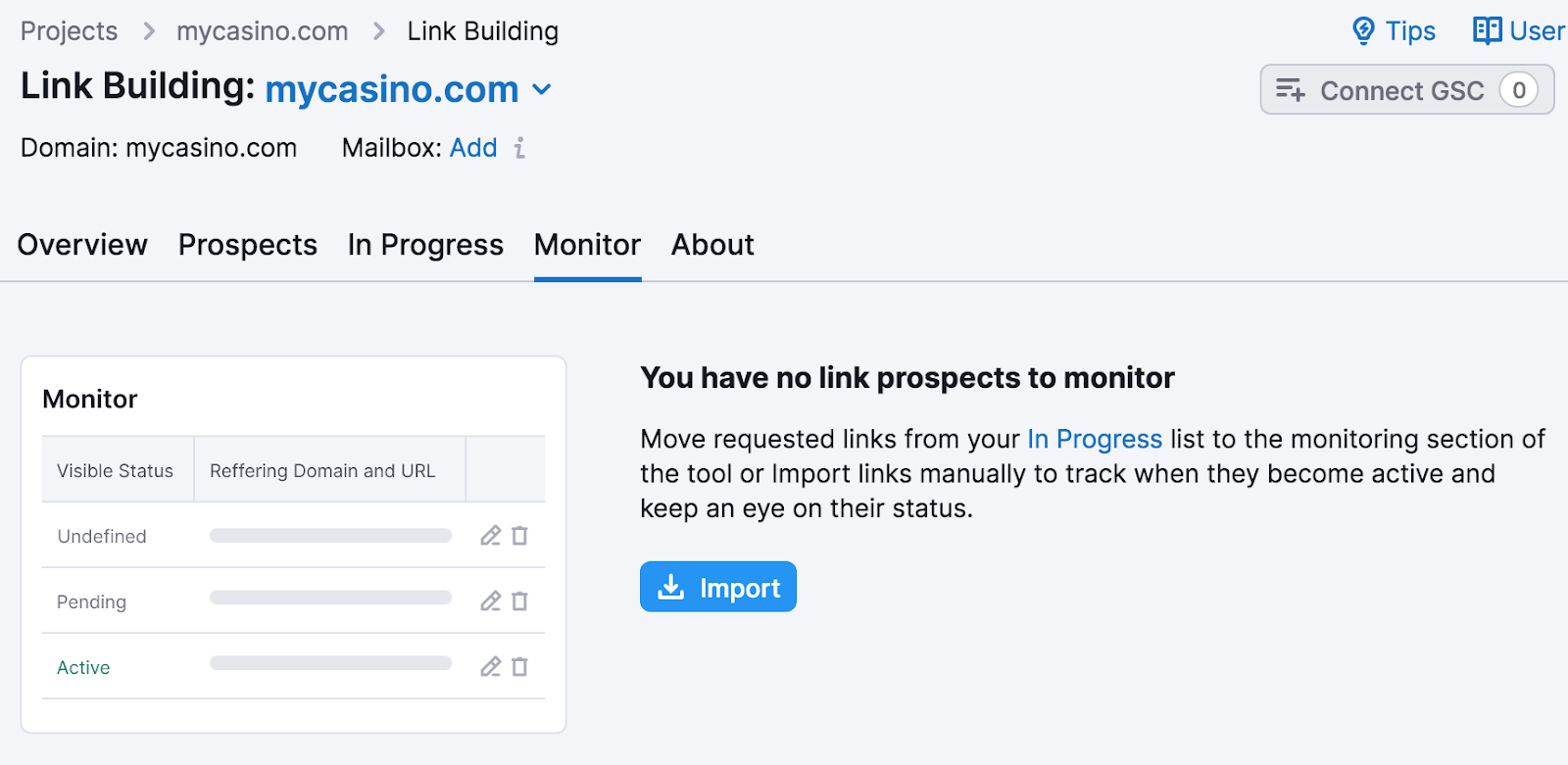
Aside from email outreach, you can use additional methods to get backlinks, such as digital PR, Help a Reporter Out (HARO), and guest blogging.
5. Leverage Content Marketing
Content marketing involves creating and distributing relevant and engaging content to prospects and existing customers, which has many benefits.
For example, blogging allows you to nurture your audience and build a strong online presence. Plus, you may also use your target keywords in your blogs and build links, which can potentially boost your organic search rankings.
Let’s say a potential customer googles “how to play roulette.”
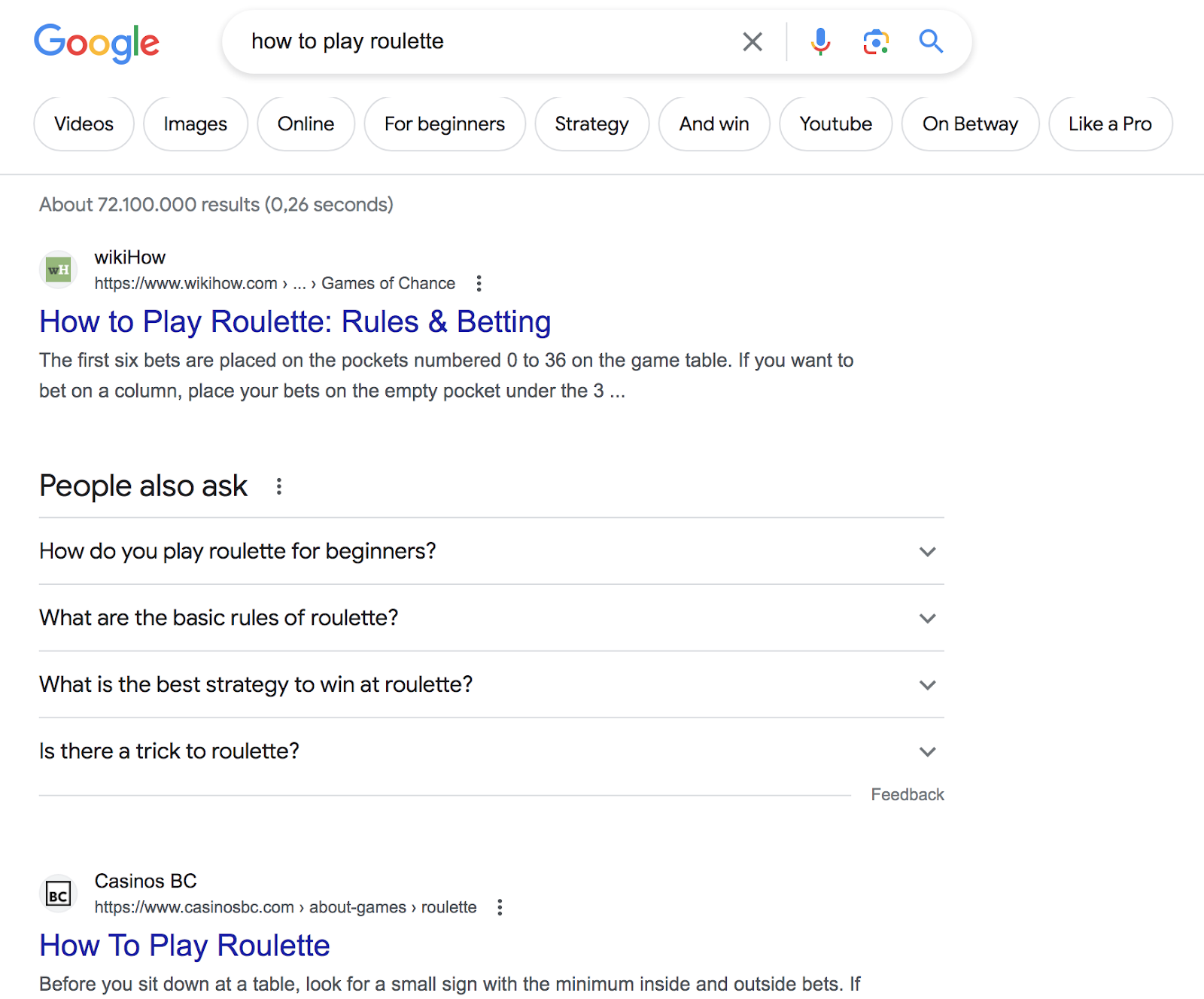
The websites that appear on the first page for this search query feature in-depth guides on this topic. You’ll see big names like 888 ******, Caesars Entertainment, and The Venetian Las Vegas.
Their blog posts and articles may also be featured on third-party platforms like news outlets, social networks, and lifestyle websites, which can drive traffic and increase brand awareness.
Quality content is at the core of any successful marketing strategy.
Your website pages should inform, educate, or entertain the target audience and provide value at every step. The same goes for your email messages and the articles, videos, podcasts, case studies, and other materials you share online.
But what does it take to create compelling content? Here are some tips to help you get started.
Develop a Content Strategy
First, draft a content marketing plan that aligns with your business goals.
Start by creating “buyer personas,” or fictional profiles of your target customers. Use analytics tools, surveys, industry reports, and social media data to define and segment your market.
This approach will allow you to personalize the customer experience by delivering relevant content.
For example, you could write a series of blog posts for novice players and another series for those who already learned the ropes and now want to improve their ******** skills.
In the meantime, craft a narrative around your brand. Tell customers how it started, what sets your business apart, and why they should choose you over other ******** sites.
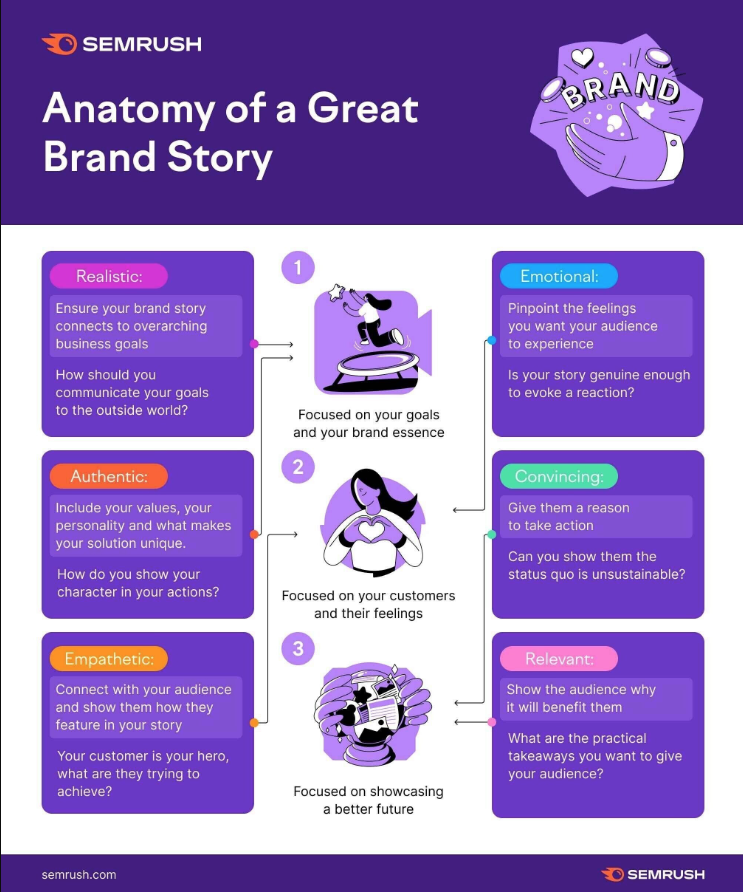
Your brand story should revolve around your unique selling proposition (USP), as illustrated below:
- USP: Your online ****** offers an exclusive selection of games not found elsewhere
Brand story: Describe how your brand’s commitment to innovation resulted in a one-of-a-kind ******** experience - USP: Players can interact with real dealers and enjoy an authentic ****** atmosphere from the comfort of their homes
Brand story: Emphasize how your brand brings the excitement of real ******* to the online world, inspired by years of player feedback
You’ll also need to handle the technical side of content marketing, such as keyword research, content planning, and analytics. See our ultimate guide to content marketing strategy for inspiration.
Use a Mix of Short- and Long-Form Content
Online ****** websites often feature short-form content—such as blog posts and press releases—and long-form content like case studies, in-depth guides, and pillar pages.
For example, BetMGM has a magazine-style blog where players can find ****** guides, ***** tips, news articles, and game reviews.

This approach allows them to cover a wide range of topics appealing to different customer groups, from novices to seasoned players.
According to a Semrush study, posts with 3,000+ words get the most traffic. A possible reason is that they cover the topic in depth and provide more opportunities for content creators to insert keywords.
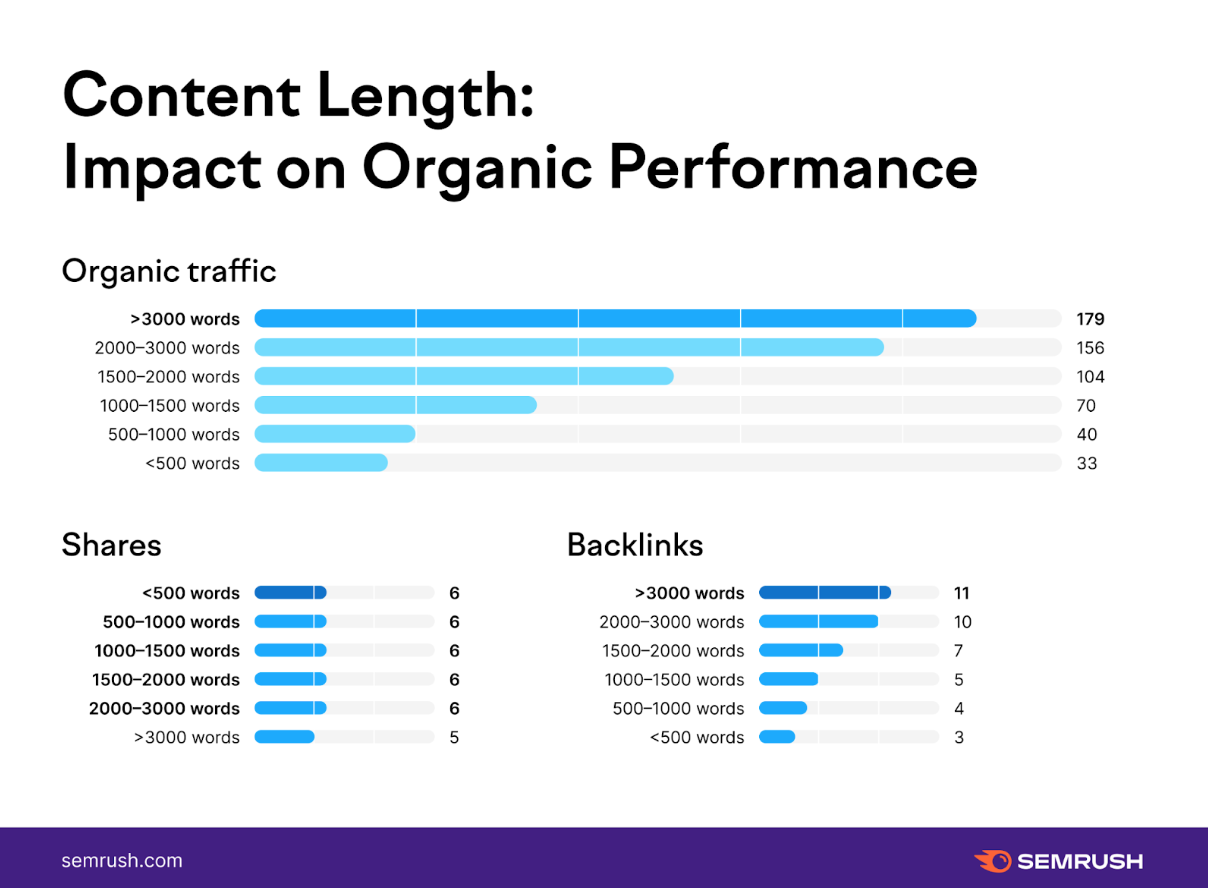
Should every post have 3,000+ keywords?
Not necessarily.
It doesn’t make sense to write that much if you can get your point across in fewer words.
Generally, long-form content is a good choice for pillar pages, reviews, guides, white papers, and reports.
Short-form content works best for blog posts, brief how-to guides, and news related to the ****** industry. It’s also suitable for social media posts, emails, and other materials used to quickly convey a short message.
Create Topic Clusters
A topic cluster is a group of webpages structured around a central pillar page that gives a broad overview of a main topic. The pillar page is linked to multiple related pages, each covering a specific subtopic.
In this cluster, not only does each subtopic page link back to the pillar page, but they may also interlink with each other.
This network of internal links between the pillar and subtopic pages helps organize content and enhances its discoverability. Therefore, keyword clustering is beneficial to both search engines and users.
Here’s an example:
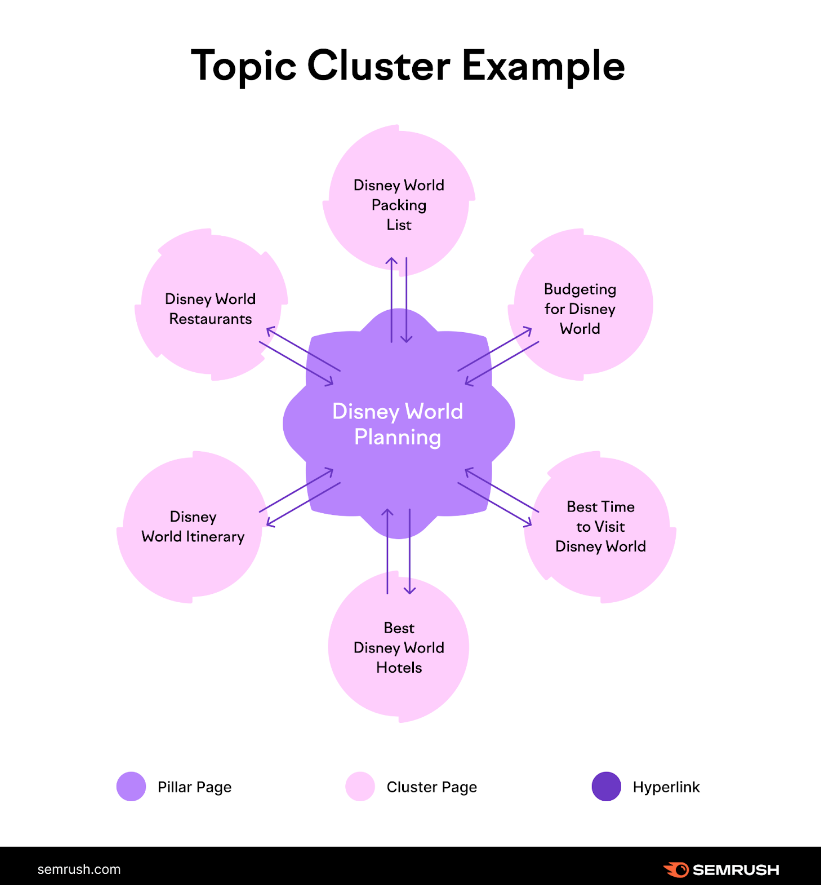
Let’s say you have a pillar page on how to play blackjack online. Your cluster pages may address the following subtopics:
- Blackjack variations
- How to play European blackjack
- How to play American blackjack
- Basic blackjack strategies for beginners
- Advanced blackjack strategies
- How to win at blackjack
- Dos and don’ts of playing blackjack
- Top 10 most common blackjack mistakes
Remember to optimize each page for relevant keywords and cover the topic in depth.
This content optimization strategy can help you build topical authority and improve website navigation. It also helps you create relevant internal links which can keep customers on your site longer.
Create a Content Calendar
Publishing quality content isn’t enough to increase website traffic and gain exposure online.
You also need to post consistently. Whether it’s on your website, blog, or social media pages.
Publishing consistently can boost your marketing efforts and help you build trust. Plus, it allows you to create a community around your brand and keep customers coming back.
This process is easier when you utilize a content marketing calendar—and stick to it.
You can use our blog calendar template or social media calendar template to plan and organize your content.
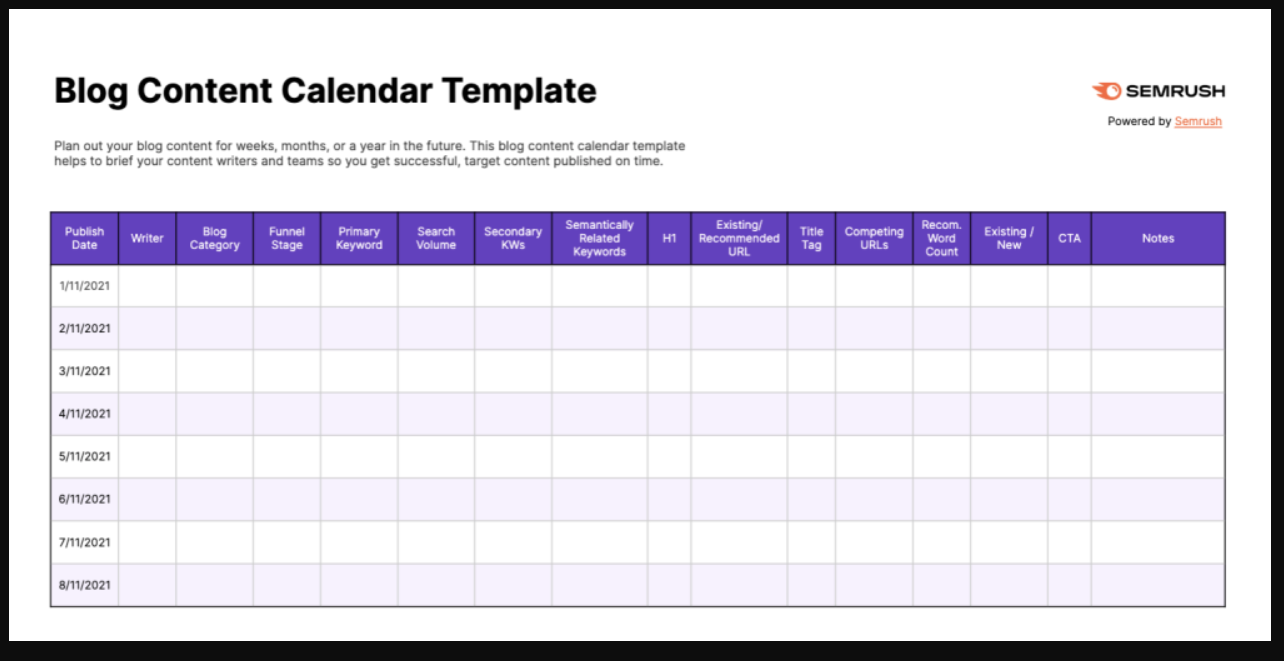
It’s okay to blog just once a week as long as you are consistent. In fact, 22% of bloggers publish content weekly, and only 13% publish two to six posts per week.
If you post consistently, customers will look forward to reading your content and regularly check your site for updates.
To stay on track, plan your content one month ahead. Consider hiring a virtual assistant (VA), a ****** SEO agency, or a freelance writer to help you out.
For example, you could outsource content creation to a professional writer and ask a VA to format and upload the articles to your site.
If you partner with an SEO company, choose one specializing in the online ******** industry.
This market has very specific requirements, and working with an agency that understands its nuances will make it easier to overcome the industry challenges.
Analyze and Measure the Results
Once your content goes live, it’s essential to measure its impact and make adjustments as needed.
Keep an eye on organic search traffic, page views, and other content marketing metrics.
Data from your content marketing campaigns may come from your website, social media analytics, or other sources. Depending on where you share your content.
If you have a blog on your website, use tools like Google Search Console (GSC) to measure website traffic, click-through rates (CTRs), keyword rankings, and other metrics.
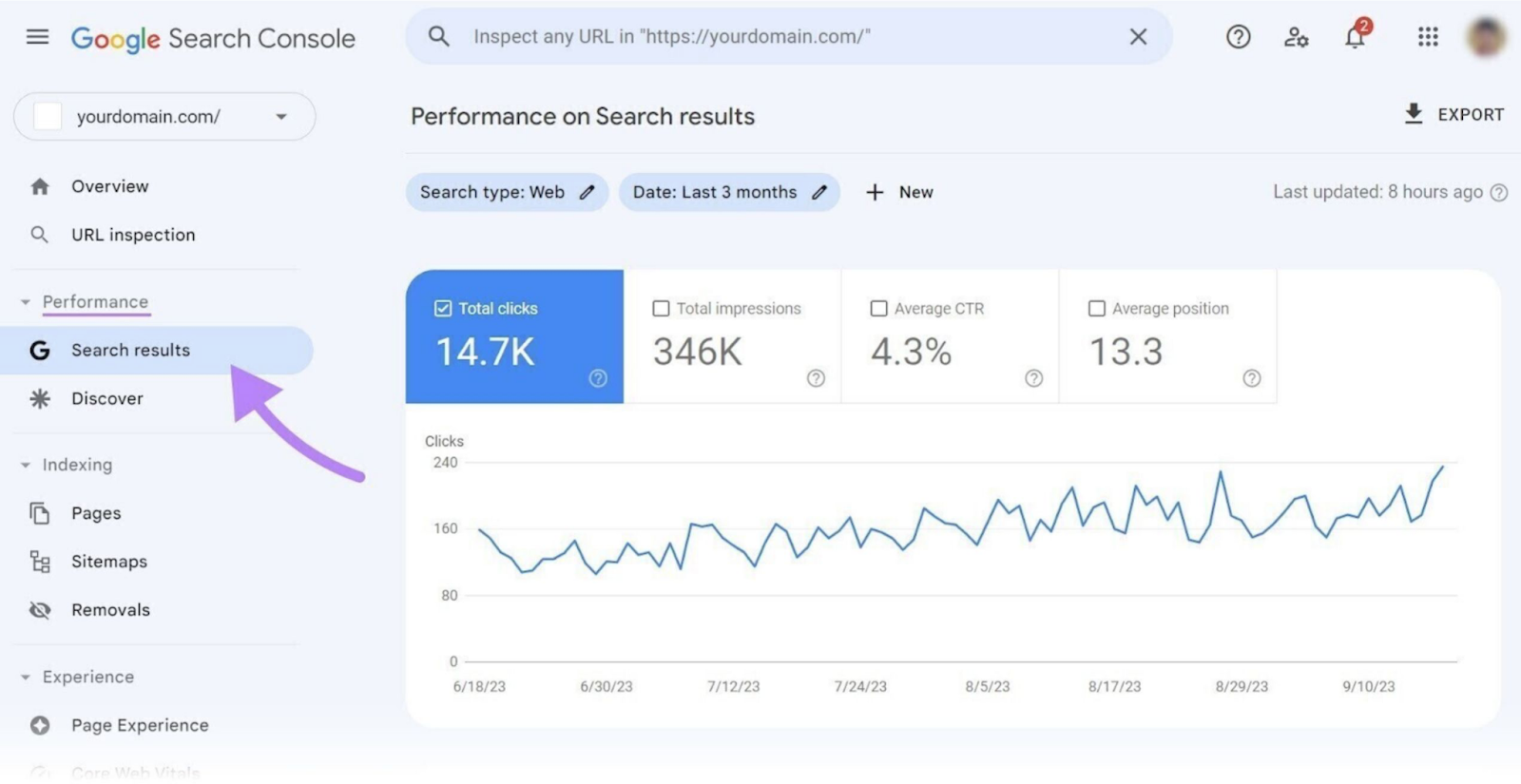
Let’s say you notice that some blog posts on your website are getting massive traffic.
Use Google Search Console to see which keywords those pages rank for and which websites are linking to them.
Then, create more content and topic clusters around those top-performing keywords.
In some cases, it may also be beneficial to use those keywords to optimize older posts and pages to improve their rankings.
Further reading: 14 Content Marketing Metrics to Track for Success
6. Improve Technical SEO
Search engine optimization is a multifaceted process with multiple components.
Internal linking, keyword research, content creation, and the other practices described in this guide are all essential components of on-page SEO.
But you also need to consider the practices illustrated below, which fall under technical SEO. This is a subset of on-page SEO.
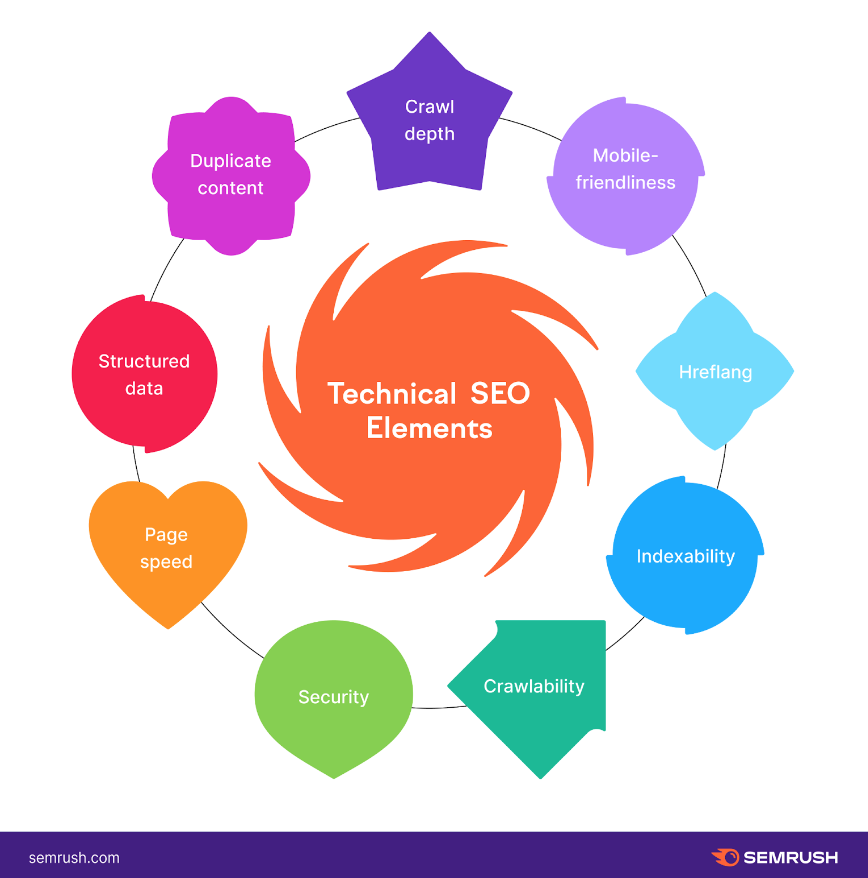
For example, ensure your website looks good on mobile devices to avoid losing relevant traffic.
According to a study conducted in the UK, 50% of all online gamblers access their favorite games from their smartphones. Another 16% use their tablets.
Additionally, 78% of all bets are placed via mobile devices.
Given these figures, it makes sense to choose a responsive theme, which adjusts its layout to any screen or device.
You’ll also want to compress large images and minify your code. The latter practice involves removing unnecessary elements like comments and whitespace from a website’s code.
Also, optimize your forms and call-to-action (CTA) buttons for different screen sizes. For example, you’ll use larger CTA buttons for mobile users so they can spot them more easily.
These practices can improve the mobile user experience, potentially resulting in higher conversions.
Go one step further and optimize your content for voice search, which was one of the top SEO trends in 2023.
For instance, a potential customer might ask, “What’s the best way to win at *****?”
To appear in voice searches, your content should have a conversational tone and include specific, relevant keywords, such as “the best way to win at *****” or “how to win ***** tournaments.”
You also need to consider page load speed, a factor that can impact your search engine rankings and the user experience. A web page that takes too long to load may deter potential customers.
You can use Google PageSpeed Insights to check how fast your web pages load.
If they are rather slow, you may need to compress large files, clean up your code, or remove unnecessary plugins. In some cases, it may be worth switching to a different web host or upgrading your hosting plan.
FAQs
How Long Does It Take to See Results with ****** Seo?
In general, it can take four to 12 months to start seeing results with SEO, according to Maile Ohye, a former Developer Programs Tech Lead at Google.
This timeframe depends on the competitive landscape and your technical know-how, target audience, budget, and other factors.
While understanding SEO basics is crucial, you also need the time and resources to optimize your site properly.
Note that whether you go the DIY route or hire SEO experts, the results won’t happen overnight.
Search engines use complex algorithms to crawl, index, and rank your web pages, which can take a long time—especially for large websites.
Further reading: How Long Does SEO Take to Work? [+ Tips for Quick Results]
What ROI Can I Expect from SEO?
Successful SEO campaigns can have an ROI of 700% or higher, depending on the industry.
However, there’s more than one way to measure SEO ROI.
Some companies estimate this number based on their sales. Others consider the number of leads or the improvements in rankings and traffic and their impact on conversion rates.
How Do You Choose the Right Keywords for Your ****** SEO Strategy?
Building an effective SEO strategy requires understanding your target market, industry, user intent, and other aspects. These factors will guide your keyword research efforts.
Focus on terms that resonate with ****** games, ******* terminology, and user-specific searches. Some examples are “play ***** online with friends,” “online ****** for real cash,” or “baccarat live.”
Next, utilize SEO tools to analyze search volume and competition levels. This data will allow you to find effective keywords.
Select the right tools to gain insights and stay ahead of the competition. A good choice is the Keyword Magic Tool, but you can also use other tools from Semrush to track your ranking position, audit your website, and more.
Source link : Semrush.com
